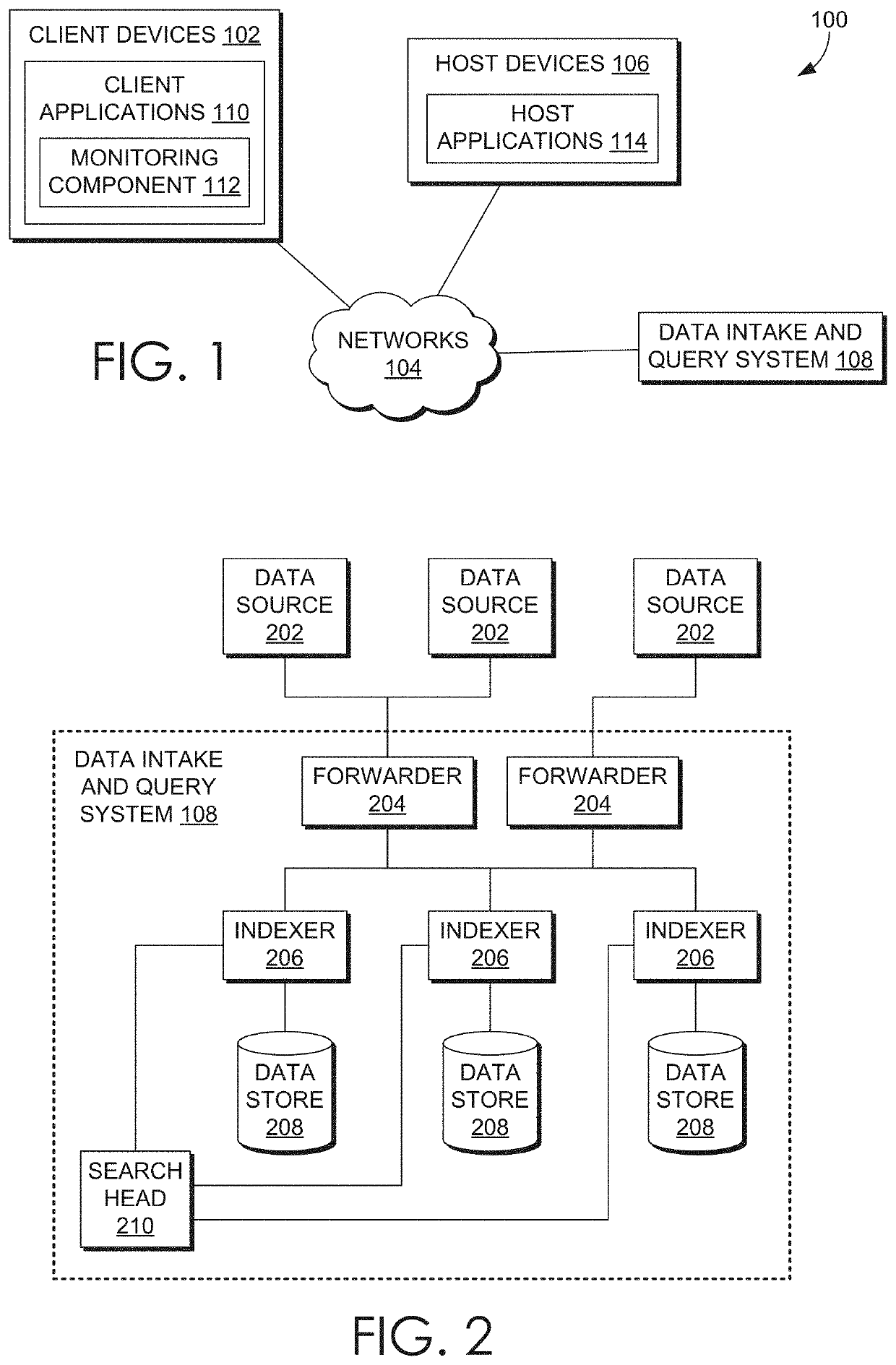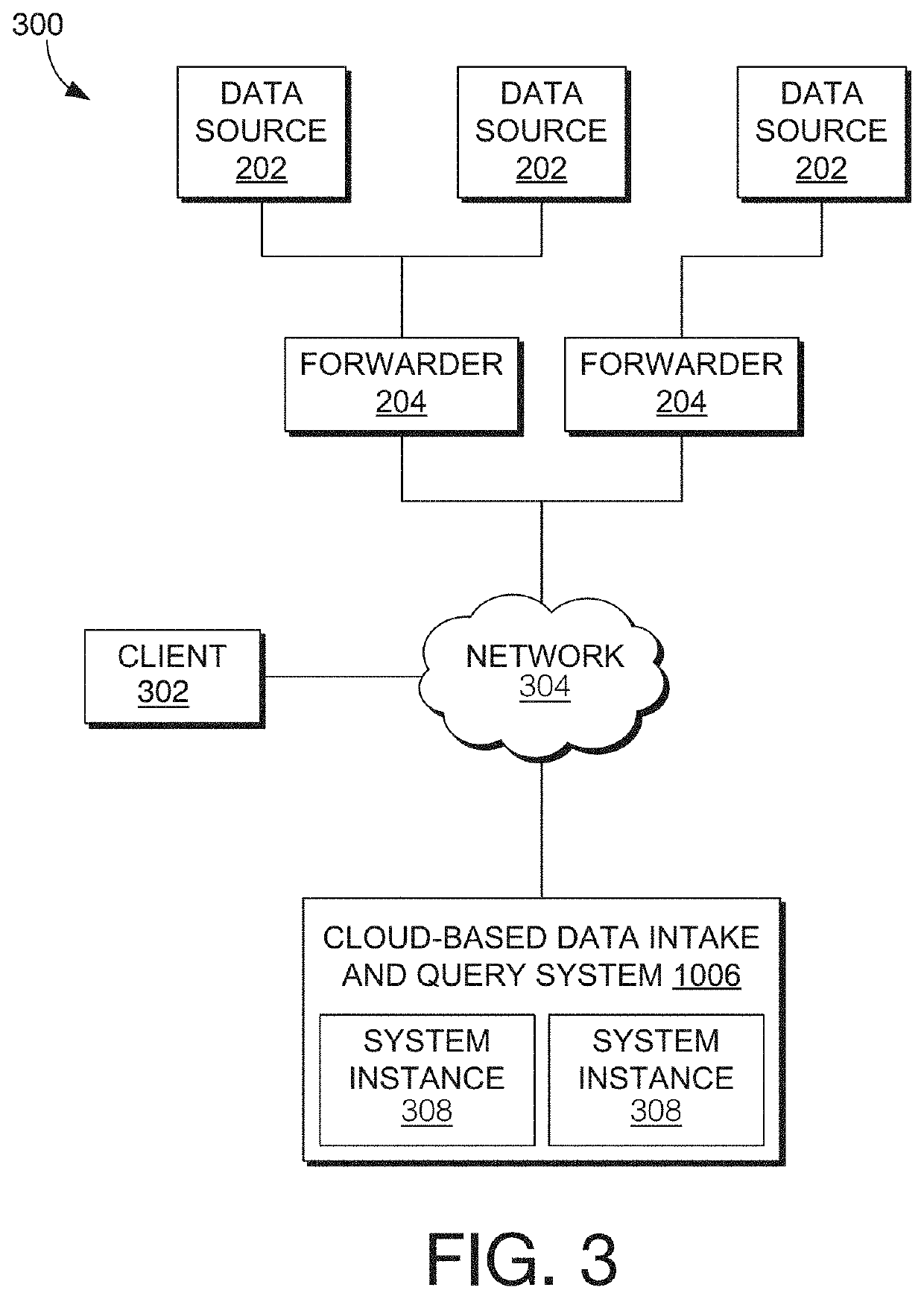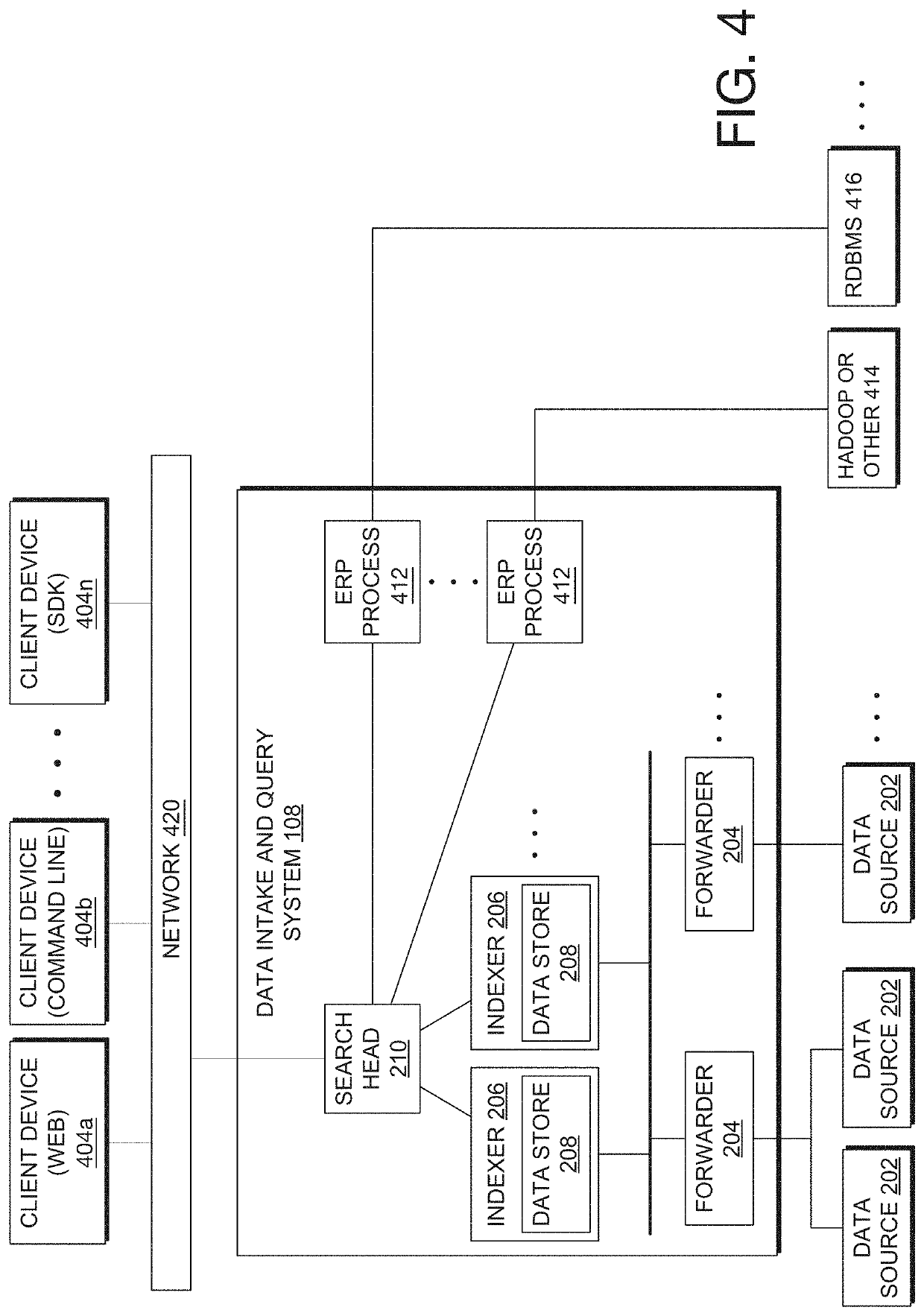Predicting follow-on requests to a natural language request received by a natural language processing system
a natural language processing system and follow-on request technology, applied in the field of computer and data science, can solve the problems of difficult retrieval and analysis of data, difficulty in retrieving and analyzing data from splunk data sources, and user that is unfamiliar with a given dsl
- Summary
- Abstract
- Description
- Claims
- Application Information
AI Technical Summary
Benefits of technology
Problems solved by technology
Method used
Image
Examples
Embodiment Construction
[0055]In the following description, numerous specific details are set forth to provide a more thorough understanding of the various embodiments. However, it will be apparent to one of skilled in the art that the inventive concepts may be practiced without one or more of these specific details.
[0056]Embodiments are described herein according to the following outline:
1. General Overview
[0057]2.1. Host Devices
[0058]2.2. Client Devices
[0059]2.3. Client Device Applications
[0061]2.5. Cloud-Based System Overview
[0062]2.6. Searching Externally-Archived Data[0063]2.6.1. ERP Process Features
[0064]2.7. Data Ingestion
[0065]2.7.1. Input
[0066]2.7.2. Parsing
[0067]2.7.3. Indexing
[0068]2.8. Query Processing
[0069]2.9. Pipelined Search Language
[0070]2.10. Field Extraction
[0071]2.11. Example Search Screen
[0072]2.12. Data Models
[0073]2.13. Acceleration Technique[0074]2.13.1. Aggregation Technique[0075]2.13.2. Keyword Index[0076]2.13.3. High Performanc...
PUM
 Login to View More
Login to View More Abstract
Description
Claims
Application Information
 Login to View More
Login to View More - R&D
- Intellectual Property
- Life Sciences
- Materials
- Tech Scout
- Unparalleled Data Quality
- Higher Quality Content
- 60% Fewer Hallucinations
Browse by: Latest US Patents, China's latest patents, Technical Efficacy Thesaurus, Application Domain, Technology Topic, Popular Technical Reports.
© 2025 PatSnap. All rights reserved.Legal|Privacy policy|Modern Slavery Act Transparency Statement|Sitemap|About US| Contact US: help@patsnap.com



